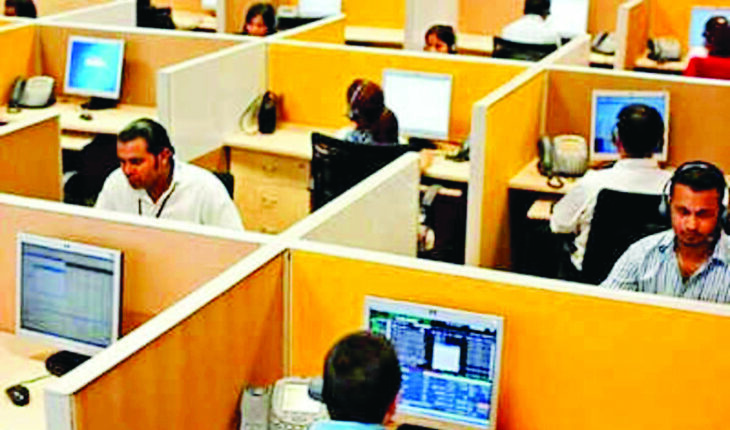Mumbai: With automation taking place at a much faster pace across industries especially in the tech space, domestic software firms that employee over 16 million are set to slash headcounts by a massive 3 million by 2022, which will help them save a whopping USD 100 billion mostly in salaries annually, says a report.
The domestic IT sector employs around 16 million, of which around 9 million are employed in low-skilled services and BPO roles, according to Nasscom.
Of these 9 million low-skilled services and BPO roles, 30 per cent or around 3 million will be lost by 2022, principally driven by the impact of robot process automation or RPA. Roughly 0.7 million roles are expected to be replaced by RPA alone and the rest due to other technological upgrades and upskilling by the domestic IT players, while it the RPA will have the worst impact in the US with a loss of almost 1 million jobs, according to a Bank of America report on Wednesday.
Based on average fully-loaded employee costs of USD 25,000 per annum for India-based resources and USD 50,000 for US resources, this will release around USD 100 billion in annual salaries and associated expenses for corporates, the report says. “TCS, Infosys, Wipro, HCL, Tech Mahindra and Cognizant and others appear to be planning for a 3 million reduction in low-skilled roles by 2022 because of RPA up-skilling.
“This is a USD 100-billion in reduced salary and other costs, but on the flipside, it offers a likely a USD 10 billion boon for IT companies that successfully implement RPA, and another a USD5 billion opportunity from a vibrant new software niche by 2022. Given that robots can function for 24 hrs a day, this represents a significant saving of up to 10:1 versus the human labour,” says the report.
Robot process automation (RPA) is the application of software, not physical robots, to perform routine, high-volume tasks, allowing employees to focus on more differentiated work. It differs from ordinary software applications as it mimics how the employee has worked instead of building a workflow into technology from the ground up and thus minimising time to market and greatly reducing cost over the more traditional software-led approaches.
Offshoring helped the domestic IT sector to grow from around 1 per cent of GDP in 1998 to 7 per cent today, a highly strategic sector for its economy and has also significantly outgrown their Western peers (mainly Accenture, Capgemini and Atos) with annual revenue growth of 18 per cent between 2005 and 2019.AGENCIES
The domestic IT sector employs around 16 million, of which around 9 million are employed in low-skilled services and BPO roles, according to Nasscom.
Of these 9 million low-skilled services and BPO roles, 30 per cent or around 3 million will be lost by 2022, principally driven by the impact of robot process automation or RPA. Roughly 0.7 million roles are expected to be replaced by RPA alone and the rest due to other technological upgrades and upskilling by the domestic IT players, while it the RPA will have the worst impact in the US with a loss of almost 1 million jobs, according to a Bank of America report on Wednesday.
Based on average fully-loaded employee costs of USD 25,000 per annum for India-based resources and USD 50,000 for US resources, this will release around USD 100 billion in annual salaries and associated expenses for corporates, the report says. “TCS, Infosys, Wipro, HCL, Tech Mahindra and Cognizant and others appear to be planning for a 3 million reduction in low-skilled roles by 2022 because of RPA up-skilling.
“This is a USD 100-billion in reduced salary and other costs, but on the flipside, it offers a likely a USD 10 billion boon for IT companies that successfully implement RPA, and another a USD5 billion opportunity from a vibrant new software niche by 2022. Given that robots can function for 24 hrs a day, this represents a significant saving of up to 10:1 versus the human labour,” says the report.
Robot process automation (RPA) is the application of software, not physical robots, to perform routine, high-volume tasks, allowing employees to focus on more differentiated work. It differs from ordinary software applications as it mimics how the employee has worked instead of building a workflow into technology from the ground up and thus minimising time to market and greatly reducing cost over the more traditional software-led approaches.
Offshoring helped the domestic IT sector to grow from around 1 per cent of GDP in 1998 to 7 per cent today, a highly strategic sector for its economy and has also significantly outgrown their Western peers (mainly Accenture, Capgemini and Atos) with annual revenue growth of 18 per cent between 2005 and 2019.AGENCIES






